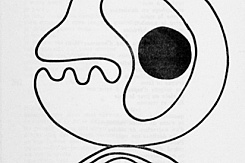As one of four focal objects of bauhaus imaginista Klee’s drawing Teppich (carpet), one of many attempts by Bauhaus artists to learn from pre-modern design practices triggers a debate around transcultural readings of vernacular objects. Klee’s drawing invites the question from a contemporary perspective, how and through which framings craft objects are transformed into an art work or a design innovation. What is gained and what is concealed in such readings?
According to French-Algerian artist Kader Attia, non-Western museum objects like Berber rugs have been detached from their original meaning by removing them from their initial context. Through a process of abstraction, they have been cleansed from the physical and social body to which they must be connected if they are to function and be complete. To fully understand an object’s identity, Attia argues, we have to reconnect it to the body.
In the context of bauhaus imaginista Kader Attia will produce a new film, based on studies on Berber jewelry that in addition to traditional metals and gems also used coins imported by colonial powers. Through the appropriation of European money, its currency became detached from its original value. The photographs of Berber jewelry from Attia’s new film project unfold a complicit relation between tradition and modernity and point out how intercultural encounters always unleash a never-ending process of exchange and re-appropriation







 (1)_2.jpg?w=245&h=163&c=1)






